Small but mighty, Guyana is a diverse nation you’ll find tucked away at the very top of South America. Although tiny compared to some of its enormous neighbors, Guyana is a nation that’s absolutely bursting with fascinating facts and curious cultural talking points.
Whether you’re planning to tour South America, want to know more about the country, or simply want to top up your geography knowledge for the next quiz night, we’ve got all the facts and figures on Guyana you need. Let us know in the comments, too, if there’s anything you think we should add.
Without further ado, let’s start with the basics!
Warning: This article contains references to suicide. Please reach out for local help using Open Counseling’s helpline list if you, or anyone you know, are at risk.
1. Guyana’s name has a strong meaning.
Where does the name “Guyana” even come from? It’s actually derived from an indigenous word thanks to the people who settled here long before the Europeans claimed the land. It roughly translates to “the land of water” or “the land of many waters.” You’ll come to see this as a pretty apt name once you get to know the place better!
2. It’s one of the smallest nations in South America.
Guyana sometimes gets forgotten thanks to its relatively small size and its position relative to other nations alongside. It’s on the north coast of South America, and has a total area of around 215,000 square km. Compare that to the size of Brazil, Guyana’s burly neighbor to the south – which measures a staggering 8.5 million square km. That makes it 40 times bigger!
3. Guyana’s population is small, yet diverse.
Reflecting the size of the country total, Guyana also has a fairly small population – again, compared to its neighbors in Venezuela and Brazil. At last estimation, it’s thought that around 741,300 people live here. Again, let’s compare that to Brazil, with an incredible estimated population of around 215 million people and growing!
However, while Guyana’s population is pretty small by comparison, it’s also impressively diverse. It’s thought that there are around six main ethnic groups making up the nation – European, East Indian, African, Amerindian, Chinese, and Portuguese.

4. Guyana was one of the first nations to outlaw slave labor and slave keeping worldwide.
It’s true! Guyana was miles ahead of other nations when it came to civil rights. It actually outlawed slavery outright in 1834. This led to a growth in need for plantation workers across the country, which resulted in large waves of immigration. The biggest wave primarily came from East India.
This is reflected in the population’s ethnic breakdown today. It’s thought that four out of ten people here are of East Indian heritage.
5. It was once part of the British Empire.
Guyana is an English-speaking former British colony. The country has changed ownership many times over the centuries, but the British claimed Guyana as early as 1796, eventually building British Guyana in 1831. By 1966, the country gained independence from Britain thanks to the introduction of fairer elections.
6. Guyana has a unique language accolade.
As a result of the country’s ties with Britain, Guyana is an English-speaking country. What’s all the more fascinating is that it’s actually the only English-speaking nation in the whole of South America! However, there are other languages spoken here, too – including Hindu, Amerindian dialects, Urdu, and Creole.
7. Its life expectancy rates fall somewhere in the middle.
The average life expectancy in Guyana is 70.32 years old as of the time of writing, which ranks it 140th in the world (out of 200 nations recorded). That’s around 15 years less than Hong Kong (with an average expectancy of around 85.63 years), and around 16 years more than Nigeria (with an average life expectancy of around 54.64 years)!
8. There are countries even smaller than Guyana!
For as small a country as Guyana is, you can go smaller! In fact, Guyana is only the fourth-smallest country on the South American mainland. It’s bigger than Uruguay, Suriname, and French Guiana. You could also count the Falkland Islands in this equation, too.
Guyana only makes up around 1% of the whole continent, the same as Uruguay and Suriname. Brazil makes up 48%! Technically, the smallest country in the world is Vatican City at 0.44 square km.
9. Guyana was hot property among colonisers.
As mentioned, the British Empire once held Guyana as part of its collection of nations, however, the British weren’t the first people to claim the land for themselves. It has been popular between the Dutch, English, and French over the years – with the majority of settlements being Dutch up until the 17th century.
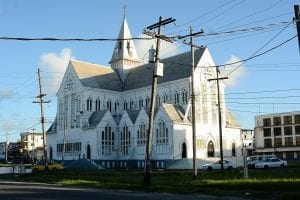
10. It’s home to several indigenous tribes.
The indigenous people of Guyana are locally known as “Amerindian.” Tribes that settled here long before the Dutch arrival – and which still have homes here – include Wai Wai, Macushi, Arawaks, Akawaio, Patamona, Caribs, Arecuna, Warao, and Wapixana. It’s thought that indigenous people are now in the minority across Guyana, largely living in the heart of the country, and regrettably, with a lower standard of living than most.
11. People from all over the world depend on Guyana’s industries and exports.
Guyana has a healthy industry consisting of bauxite (aluminum ore), timber, textiles, sugar, and rice milling. Agriculturally, Guyana produces rice, wheat, vegetable oils, and beef (and of course sugar).
The nation’s sugar, gold, bauxite, rice, and shrimp form part of its export market.
12. The nation has a firm motto.
The national motto of Guyana is “One People, One Nation, One Destiny.” It’s a bold and important message, but it’s come under scrutiny in recent years as a result of the country’s reported wealth disparity and racial equality challenges.
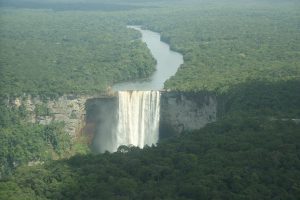
13. Why is it called the “land of waters?”
Remember all the way back to fact number one? There’s a pretty good reason why Guyana holds its name. It’s thought to have received its fitting title because of the vast array of rivers that flow and connect across it. The longest river you’ll find in Guyana is the Essequibo, which stretches north and toward the Atlantic ocean for 1,014 km. That still makes it around five or six times smaller than the Amazon!
14. The majority of Guyana is rainforest land.
One of Guyana’s most famous and fascinating features is its staggering rainforest coverage. It’s thought to take up around 91% of its land, forming part of what’s become known as the Guiana Shield. This incredible habitat is home to more than 1,800 different species of animal, and is even said to be biodiverse enough to host more than 8,000 different plant species!
15. Guyana benefits from an incredible tropical climate.
As a country that benefits from so much rainforest land, it’s not surprising that locals can expect a sweltering tropical climate out here. It’s extremely wet out here, but on average, you can expect between 16 and 34 degrees C, or between 60 degrees and 93 degrees F. What’s really interesting about the Guyanian climate is that it doesn’t tend to get too extreme.
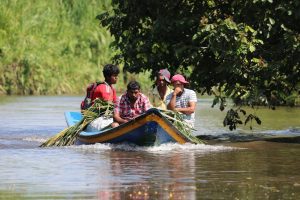
16. The water cascades in Guyana are record-breaking.
Guyana boasts the Kaieteur Falls, which at 741 ft is the largest single-drop waterfall in the world! To put that into perspective, Kaieteur is roughly five times taller than the famous Niagara Falls, which has a 167 foot drop.
17. There are some seriously rare species that call Guyana home.
Guyana is well known for its incredible biodiversity. However, it’s also famous for being home to a handful of rare critters that are sadly threatened. For example, rare species across Guyana include the daggernose shark, the black caiman, the giant river otter, and the harpy eagle. The latter is infamous for being such a threatening hunter that it’s known to steal apes out of their trees!
18. There’s a reason why Guyana is a hotbed for so much wildlife.
Guyana is amazing because it has so many different types of habitats! These include marine, coastal, littoral, swamp, estuarine, palustrine, riverine, mangrove, lacustrine, savanna, brown sand forest, montane, cloud forest, white sand forest, moist lowland and dry evergreen scrub forests!
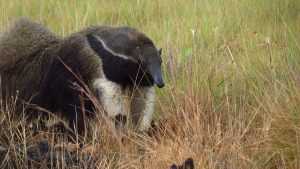
19. Guyana is a nation of cricket lovers.
Cricket fans will be pleased to know that the sport is pretty important in Guyana and it’s part of the West Indies Cricket team. Guyana’s national side, however, doesn’t currently participate in any international matches. Other members of the West Indies team include Jamaica, Leeward Islands, Windward Islands, Barbados, and Trinidad and Tobago.
Other popular sports here include soft ball cricket (beach cricket) and soccer. The national soccer team sadly isn’t ranked among the best in the world, but reached a historic high of being ranked 86th back in 2010!
20. Guyana’s even been a big host for the most prominent tournaments.
Guyana hosted international cricket matches as part of the 2007 Cricket World Cup. It was also the official host of the Indoor Pan American Cup – meaning you’ll find plenty of hockey fans here, too!
21. Guyana’s responsible for naming some of the world’s best-loved sugar.
As mentioned, Guyana is well-known across the world for being a big exporter of sugar. In fact, if you’ve ever used demerara sugar before, you have Guyana to thank. This type of sugar is named after the very first Dutch colony that settled here – the Demerara! Oddly enough, one of the main rivers in Guyana is still named after the colony, too.

22. You’ll need a specific dialing code to call people in Guyana.
If you have friends or family who live in Guyana, you’ll need to add a specific dialing code to their cell or static numbers. Be sure to add +592 before you dial.
23. The horrific Jonestown Massacre took place in Guyana.
Guyana is also sadly associated with what’s become known as one of the most infamous mass suicides in known history. It was back in 1978 that Jim Jones, a cult leader, led 918 people to commit suicide in Guyana – and the incident has gone down in the books as the Jonestown Massacre.
24. Guyana also has some of the highest suicide rates in the world, period.
Beyond the Jonestown Massacre – and despite the country’s positive assets – Guyana is sadly known for being one of the most affected countries in terms of suicide rates. It’s thought to have the second-highest suicide rate per 100,000 people in the world, at around 40.3 people per 100k. It’s second only to Lesotho at 72.4 people per 100,000. The majority of people committing suicide in Guyana are male.
If you, or anyone you know needs immediate mental health support or is suicidal, please consult Open Counseling’s list of international helplines and call for help.
25. Oil has helped to transform Guyana’s fortunes.
Guyana’s GDP per capita has increased dramatically over the years to a staggering $26,590 at last measurement. This is said to be partially thanks to oil discoveries which helped to put the nation firmly in the headlights of investors. Sadly, there are still reports of economic disparity across the nation. That said, its gross debt has shrunk to around a third of its GDP, too.

26. People largely observe two main religions in Guyana.
It’s thought that the two dominant religions observed in Guyana are that of Pentecostal Christianity and Hinduism. However, Islam and Roman Catholicism are also followed by thousands nationwide. Few people in Guyana claim to be nonreligious. The main religious holidays followed in Guyana are Muslim, Catholic, and Hindu.
27. Much of Conan Doyle’s work is said to have been inspired by Guyana.
Sir Arthur Conan Doyle, most famous as the author of the original Sherlock Holmes stories, also found success with “The Lost World,” which was published back in 1912. Within the novel, characters visit a diverse mountainous landscape that’s thought to be loosely based on Guyana’s own.
28. It’s a land of floating bridges!
Floating bridges, otherwise known as pontoon bridges, are makeshift bridges built out of lining barges or boats together. Guyana, interestingly, is home to two of the longest floating bridges in the world – the Demerara Harbor Bridge, and the Berbice Bridge. Both bridges are more than 1,500 m long, and are thought to rank in the top six of their type!
29. Several turtle species are protected here.
Out toward Guyana’s Atlantic coast, there’s Shell Beach – which has become an extremely important site for animal conservationists, specifically those who are invested in protecting endangered turtles. It’s here where at least four species of sea turtle – including the Olive Ridley, Leatherback, Green, and Hawksbill sea turtles – nest, hatch, and enter the sea. Shell Beach was once used as a meat-hunting site – but now, it’s a major conservation spot.
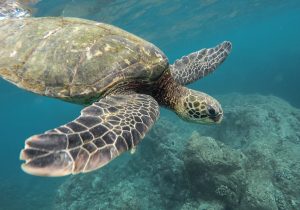
30. It’s normally best to try and visit Guyana between November and April.
As mentioned, Guyana has a tropical climate, which means there will always be dry and rainy seasons. If you’re keen to keep out of the rain when visiting Guyana, you should probably try and visit between November and April, when there is likely to be dry weather. In fact, for the sunniest days here, it’s probably best to try and visit between December and January, when you might well be experiencing a cold snap!
31. Guyana is committing itself to sustainability and conservation.
Perhaps unsurprisingly, a biodiverse nation like Guyana deserves some serious care and support. Therefore, the nation is regularly boosting its efforts to make life more sustainable and to try and protect its stunning rainforests from oil extraction in the region. In fact, many people visiting Guyana are investing in sustainable tourism, making sure to take care of how they use the land when they visit.
If you’re interested in visiting Guyana and want to protect its land and beauty as much as possible, make sure to ask about sustainable tourism when booking with a travel agent, or to tailor your own trips around these ideas!
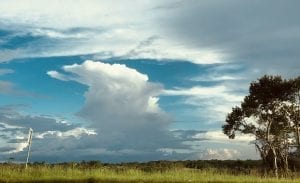
FAQs about Guyana
Is Guyana a safe country to visit?
While Guyana is largely English-speaking and an absolutely gorgeous country to visit, it does sometimes have problems with violent crime - you are advised to be very careful if traveling here. Be sure to consult travel advice offered by your local government before booking any travel or accommodation.
What is the main religion in Guyana?
Guyanese people follow many different religions - with Islam, Christianity and Hinduism being the three biggest faiths.
What is Guyana’s staple dish?
One of the most popular dishes in Guyana is called pepperpot - which is a beef dish that you cook for hours on end (i.e. in a crock pot). Why not sample one when you visit? Alternatively,. There are plenty of Guyanian dishes and staples you can enjoy from home with some authentic ingredients – and a great place to start looking is social media such as TikTok and Instagram..
Further reading
https://www.guyanatourism.com/
https://www.lonelyplanet.com/the-guianas/guyana
Do you know any fun facts about Guyana? Share them in the comments below!
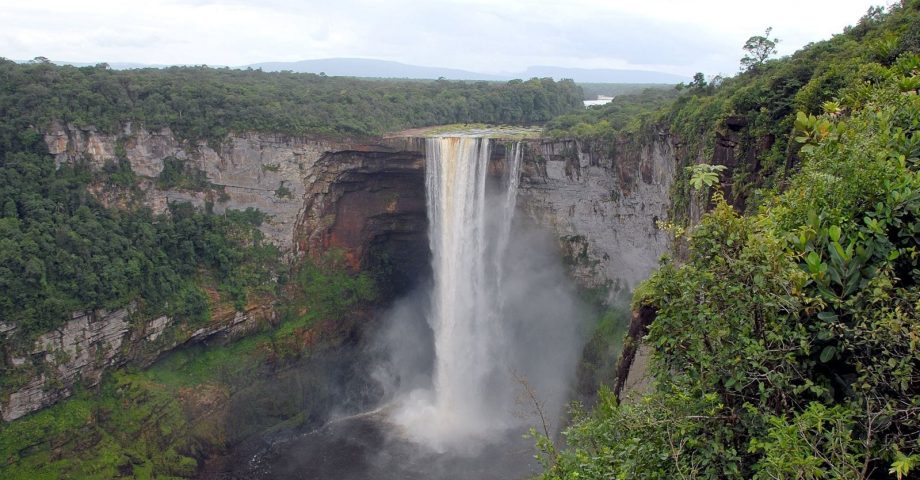









Comments are closed.